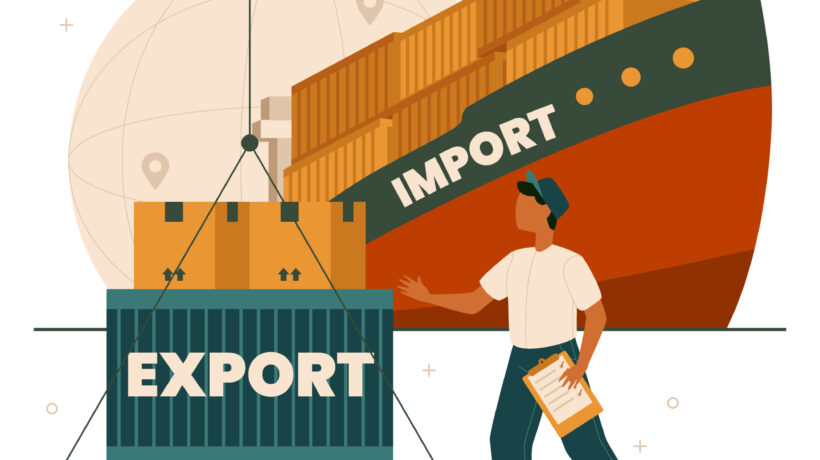5 Common Import-Export Mistakes and How to Prevent Them
Entering the world of international trade is both exciting and challenging. For new importers and exporters, the global marketplace offers limitless opportunities to grow and connect with partners worldwide. Yet, without the right strategies and preparation, it’s easy to fall into costly traps that threaten profitability and long-term success.
From underestimating currency risks to relying on outdated trade data, these common errors can derail even the most promising businesses. In this article, Bill of Lading Data highlights the five most common mistakes new importers and exporters make — and how to avoid them for a more efficient, profitable trade journey.
1. Ignoring Currency and Exchange Rate Fluctuations
Exchange rate volatility is one of the biggest challenges in international trade. A small shift in currency value can eat into your profit margins or turn a profitable deal into a loss. Unfortunately, many new traders fail to plan for currency risks, leaving their finances vulnerable.
How to Manage Currency Risks Effectively
- Monitor Exchange Rates Regularly: Use reliable currency tracking tools and set alerts to respond quickly to changes.
- Use Forward Contracts: Lock in exchange rates for future transactions to protect against unfavorable shifts.
- Consider Currency Hedging: Explore financial instruments like options or swaps to minimize exposure to fluctuations.
By proactively managing currency movements, importers and exporters can maintain predictable profits and financial stability.
2. Lacking a Clear Logistics Strategy
Efficient logistics are the foundation of a successful import-export business. New traders often underestimate how complex international shipping can be — from customs regulations to delivery delays. Poor logistics planning leads to higher costs, frustrated customers, and damaged reputations.
Building a Reliable Logistics Plan
- Partner with Trusted Logistics Providers: Work with experienced freight forwarders who handle documentation, customs, and shipment tracking.
- Plan Routes and Shipping Modes in Advance: Choose between air, sea, or road transport based on cost, speed, and reliability.
- Track Shipments in Real Time: Use tracking systems to stay updated on shipment status and manage delays efficiently.
A well-organized logistics strategy ensures on-time delivery, cost savings, and customer satisfaction — all critical for building trust in international markets.
3. Skipping Shipment Insurance
Shipment insurance might seem optional, but it’s essential for protecting your goods. Without adequate insurance, importers and exporters risk major financial losses due to theft, damage, or accidents during transit.
Choosing the Right Insurance Coverage
- Understand Different Coverage Options: Compare all-risk policies (covering most scenarios) with limited coverage for specific events.
- Evaluate Premiums vs. Potential Losses: Balancing cost with risk helps you make smarter insurance decisions.
- Consult an Expert: Insurance professionals can help you select policies suited to your product type, route, and risk profile.
With the right insurance, your business gains financial protection and peace of mind, even in the face of unforeseen shipping issues.
4. Overlooking Clear Payment Terms
Unclear payment terms are a recipe for disputes and delayed transactions. Many new traders assume verbal agreements are enough — until a payment issue arises. Setting well-defined payment terms ensures trust, transparency, and smoother financial operations.
Establishing Secure Payment Terms
- Agree on Payment Methods Early: Decide whether to use letters of credit, wire transfers, or other secure options.
- Define Deadlines and Penalties: Specify payment due dates and consequences for late payments.
- Document Everything: Use written contracts to formalize agreements and prevent future disputes.
Clear payment policies protect cash flow, strengthen relationships, and minimize risks in international transactions.
5. Relying on Outdated or Inaccurate Data
In today’s fast-changing global trade environment, outdated data can lead to poor decisions and missed opportunities. Many new importers and exporters depend on static reports, unaware that market trends, prices, and regulations can shift rapidly.
Staying Ahead with Real-Time Trade Data
- Use Updated Data Platforms: Tools like Bill of Lading Data provide real-time shipment insights, buyer-supplier details, and market trends.
- Adopt Data Analytics Tools: Platforms like Power BI or Tableau can help visualize trade performance and forecast future opportunities.
- Verify and Refresh Your Data Regularly: Cross-check information from government sources and trade associations to maintain accuracy.
Accurate and up-to-date data empowers smarter decisions, helping importers and exporters remain competitive and adaptive in global trade.
Final Thoughts
Succeeding in the import-export industry takes more than ambition — it requires preparation, awareness, and access to reliable data. By avoiding common mistakes like currency mismanagement, poor logistics, and outdated information, businesses can create a strong foundation for growth.
With the right strategies, partnerships, and insights from Bill of Lading Data, your import-export journey can be smooth, sustainable, and profitable. Equip yourself with real-time trade intelligence today — and trade smarter across global markets.





